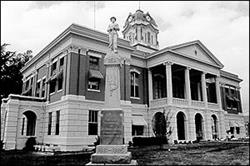Easements
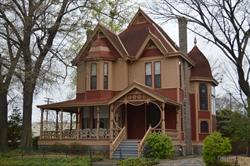
1889 Hangar House
What is a preservation easement?
A preservation easement (more generally called a conservation easement) is a voluntary legal agreement through which a property owner grants rights to approve future development of or changes to a historic property to a qualified organization whose mission includes historic preservation. Once recorded, the easement restrictions “run with the land” in perpetuity, thus binding not only the owner who grants the easement but all future owners as well. In Arkansas, the primary recipient of these easements is the Arkansas Historic Preservation Program (AHPP).
Why do people donate easements?
An easement is a particularly useful historic preservation tool that may originate for a number of reasons.
- A preservation easement allows a property owner to sell or otherwise plan for a property’s disposition while ensuring that the historic character of the property will be preserved.
- The Arkansas Historic Preservation Program requires the donation of easements on all properties for which it gives a grant of over $10,000.
- In addition, an owner who donates an historic preservation easement may be eligible for one or more forms of tax benefits. If certain criteria are met, the owner may be eligible for a Federal income tax deduction for the value of the easement, and Federal estate taxes also may be reduced. Since the rules are complex, property owners interested in the potential tax benefits of an easement should consult with a tax specialist familiar with the topic. See the National Park Service’s information here.
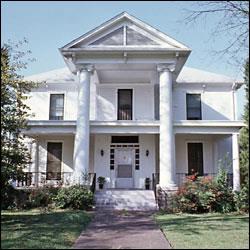
Sheeks House, Corning
What kinds of changes are reviewed?
A preservation easement gives AHPP the legal authority and responsibility to enforce its terms. Donation of an easement does not mean that a building is “frozen in time.” However, owners are prohibited from demolishing the historic building(s) and from making changes that are inconsistent with the historic character of the property. Proposed alterations to the property should be planned in partnership with AHPP. Most easements apply only to the exterior of a building and/or property, and future alterations to the interior do not require approval from AHPP, as long as the alterations do not affect the building’s exterior appearance or structural integrity. AHPP monitors the condition of all properties on which it holds easements at least annually. More information on easement terms can be found here.
What is involved in donating an easement?
If you are interested in donating an easement, you should contact our office and ask to speak to the easement coordinator for more details. Donating an easement is a legal process that involves signing a legal agreement, getting an appraisal, working with a title company, having a copy of your deed, etc., similar to other real property transactions. More information on the process can be found here.
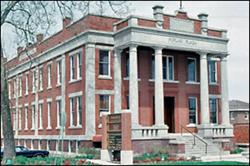
Mutual Aid Union Building

Eureka Springs Auditorium
Ongoing Requirements of Easement
1. Changes to an easement property (typically the facades and any surrounding property that might affect the facades), including new construction and alterations, must be planned in advance in concert with AHPP and must comply with the Secretary of the Interior’s Standards for Rehabilitation. Although usually this process is a partnership, AHPP has final approval authority over changes under the terms of the easement.
2. Significant features of the easement property may not be demolished.
3. The easement parcel may not be subdivided.
4. If the property is damaged by storm, fire, or other accident, it must be appropriately repaired, if feasible. Feasibility will be determined in concert with AHPP.
5. Property insurance must be maintained on the easement property with AHPP listed as an additional insured.
6. The easement property must be properly maintained. AHPP generally visits properties every year or two to check the condition and needs of individual easement properties so that owners can be offered technical advice or notification of condition issues.
7. Property taxes and other government fees and charges related to the property must be paid on time.
8. Members of the public may be allowed to enter the property once a year for research purposes, by appointment.
9. AHPP must be given reasonable access to the property for purposes of inspection.
How do I donate a preservation easement?
When you are ready to discuss donating an easement, a staff member from the AHPP will make a site visit.
During this visit, the staff member will explain the program and review the standard restrictions. Then you and the staff member can begin to negotiate the terms of the easement and agree on the language of a draft. At an appropriate time, the staff member presents the matter to the AHPP, and the AHPP determines whether to accept the easement, if ultimately offered. The staff always recommends that donors consult their attorneys and have them review the easement document. Following an affirmative determination by the AHPP, the terms of the easement are put in final form. The property is documented photographically with the photographs becoming part of the legal record. Both the owner and the director of the Arkansas Historic Preservation Program sign the easement deed. It is then recorded in the local court records, and the original document is returned to the AHPP for deposit in agency files.
What properties are eligible?
In order to be eligible for the tax deduction, the property must be listed in the National Register of Historic Places individually or as a contributing component of a National Register historic district. For more information, contact the AHPP.
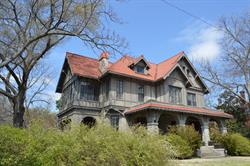
Turner-Back House
